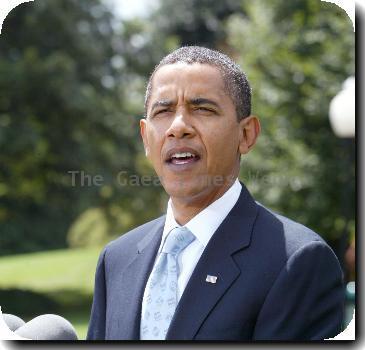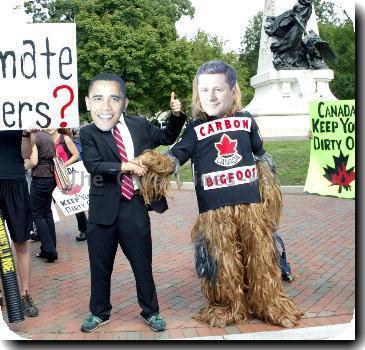Nuclear treaty conference backs plan of early steps toward global disarmament
By Charles J. Hanley, APFriday, May 28, 2010
Nuclear treaty conference backs steps to disarm
UNITED NATIONS — The 189 member nations of the Nuclear Nonproliferation Treaty on Friday adopted a detailed plan of small steps down a long road toward nuclear disarmament, including a sharply debated proposal to move toward banning doomsday arms from the Middle East.
The 28-page final declaration was approved by consensus on the last day of the monthlong conference, convened every five years to review and advance the objectives of the 40-year-old NPT.
Under its action plan, the five recognized nuclear-weapon states — the United States, Russia, Britain, France and China — commit to speed up arms reductions, take other steps to diminish the importance of atomic weapons, and report back on progress by 2014.
The final document also calls for convening a conference in 2012 “on the establishment of a Middle East zone free of nuclear weapons and all other weapons of mass destruction.”
This Arab idea of a WMD-free zone is designed to pressure Israel to give up its undeclared nuclear arsenal. Despite the decision here, U.S. officials questioned whether Israel could be persuaded to attend the conference.
U.S. National Security Adviser Gen. James Jones said in a statement late Friday that the U.S. has “serious reservations” about the conference and “deplores” the decision to single out Israel in the Mideast section of the document. As a cosponsor of the 2012 conference, he said the United States will ensure that it will only takes place “if and when all countries feel confident that they can attend.”
“Because of (the) gratuitous way that Israel has been singled out, the prospect for a conference in 2012 that involves all key states in the region is now in doubt,” Jones said.
Iran and Syria had dissented loudly on various points in the final hours, but no objections were raised in the concluding session. After the declaration’s approval, Iran’s chief delegate Ali Asghar Soltanieh joined with the others in hearty applause beneath the U.N. General Assembly hall’s soaring dome.
“All eyes the world over are watching us,” the conference president, Libran Cabactulan of the Philippines, said before gaveling the final document into the record.
The decision was “an important step forward towards the realization of the goals and objectives of the treaty,” Egypt’s Maged Abedelaziz said afterward, speaking for the 118-nation Nonaligned Movement of mainly developing countries.
“The final document this conference adopted today advances President Obama’s vision” of a world without nuclear weapons, U.S. Undersecretary of State Ellen Tauscher told the assembled delegates.
Under the 1970 nonproliferation treaty, nations without nuclear weapons committed not to acquire them; those with them committed to move toward their elimination; and all endorsed everyone’s right to develop peaceful nuclear energy.
The last NPT conference, in 2005, failed to adopt a consensus declaration, in part because U.S. President George W. Bush had withdrawn U.S. backing for such nonproliferation steps as ratifying the treaty banning all nuclear tests. President Barack Obama’s support for an array of arms-control measures improved the cooperative atmosphere at the 2010 conference.
For the first time at an NPT review, the final declaration laid out complex action plans for all three of the treaty’s “pillars” — nonproliferation, disarmament and peaceful nuclear energy.
The five recognized weapons states did manage to strip earlier drafts of specific timelines for disarmament negotiations, such as a proposal that they consult among themselves on how to disarm and report back to the 2015 conference, after which a high-level meeting would convene to negotiate a “roadmap” for abolishing nuclear weapons.
But in the final draft the five weapons states committed to “accelerate concrete progress” toward reducing their atomic weaponry, and to report on progress in 2014 in preparation for the 2015 NPT review session.
The document calls on them also to reduce the role of nuclear arms in their military doctrines and consider downgrading the alert status of weapons systems, and it held out the possibility of negotiations on a global treaty abolishing nuclear arms.
Cuba expressed the disappointment of many non-nuclear-weapon states here that the nuclear powers did not accept a firmer timetable, saying it had done “all we could to set a timetable with 2025 as the deadline for the total elimination of nuclear weapons.”
The disarmament action plan also inevitably leaves a major gap, since it doesn’t obligate four nations that are not members of the treaty — India, Pakistan, Israel and North Korea, all of which have or are suspected of having nuclear arsenals.
On the Middle East, Arab states and Israel’s allies had been at odds over wording in the plan to convene a conference in 2012 to begin a process to turn the region into a zone free of nuclear and other mass-destruction weapons.
This Arab proposal for a WMD-free zone, to pressure Israel to give up its undeclared arsenal of perhaps 80 nuclear warheads, was endorsed by the 1995 NPT conference but never acted on.
Israel has long said a full Arab-Israeli peace must precede such weapons bans. But at this conference the U.S., Israel’s chief supporter, said it welcomed “practical measures” leading toward the goal of a nuke-free zone, and U.S. diplomats discussed possibilities with Israel.
A sticking point had been a passage naming Israel, reaffirming “the importance of Israel’s accession to the NPT,” a move that would require it to destroy its arsenal.
Iran demanded that this NPT session insist Israel join the treaty before a 2012 conference. Egypt’s Abdelaziz told reporters the Arab position was softer — that Israel’s accession to the treaty would come as “part of the process” begun in 2012.
Although the Israelis apparently had acquiesced to U.S. urging that they take part in such a 2012 discussion, they objected to participating under terms in which they were the only nation mentioned in this way, diplomats said.
In the end, the singling out of Israel remained in the text, and Tauscher said that would “seriously jeopardize” U.S. efforts to persuade the Israelis to attend 2012 talks.
Establishment of a verifiable Mideast nuclear weapons-free zone should help allay international concerns about whether Iran’s ambitious nuclear program is aimed at building bombs, something Tehran denies. The Iranians have long expressed support for a nuke-free Mideast.
Besides Israel’s attendance, other important details of a 2012 Mideast conference remain to be worked out, such as whether the talks are meant as the start of formal negotiations on a treaty.
Iran had loomed as a potential spoiler, blocking consensus, at this conference. Facing possible new U.N. sanctions because of its nuclear program, the Iranians had sought to turn the spotlight instead on the big nuclear powers, demanding the final document call for speedier disarmament moves.
On the other hand, the final document did not single Iran out by name as a member nation that has been found to be in noncompliance with U.N. nuclear safeguards agreements.
Although the Iranians did not block final agreement, Tauscher complained, “We note that Iran has done nothing to enhance the international community’s confidence in it by its performance in this review conference.”
Iran’s Soltanieh said the Americans should “think twice” before making such statements, that “this was not the right reaction to a positive response, positive measure by our delegation joining the consensus.”
The “limited measures” of the final document were “a step forward” toward global disarmament, he said.
AP correspondent Edith M. Lederer contributed to this report.
Tags: Barack Obama, International Agreements, Iran, Israel, Middle East, North America, Nuclear Weapons, Political Issues, United Nations, United States, Weapons Administration, Weapons Of Mass Destruction

